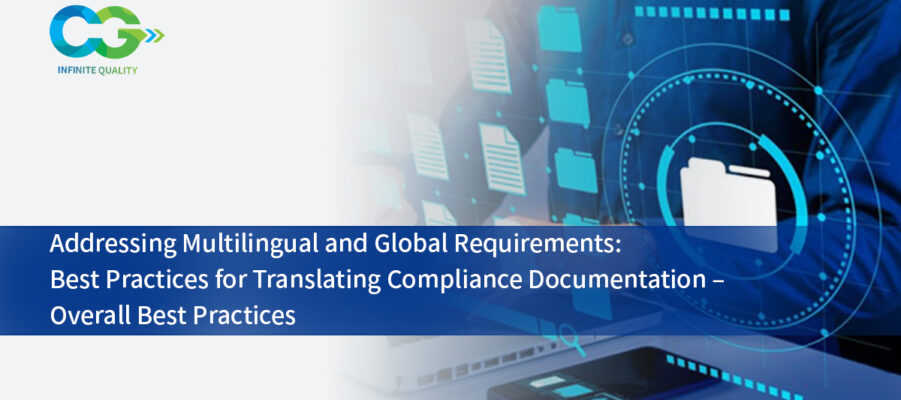
Article Context:
Multilingual and global requirements refer to the need for businesses and organizations to operate across different languages and regions while adhering to diverse regulatory standards. These requirements arise due to factors such as globalization, multicultural workforces, and the expansion of digital communication platforms.
Addressing multilingual and global requirements when translating compliance documentation is essential to ensure that all stakeholders can access and understand critical information regardless of their language or location.
Taking a systematic approach to translating compliance documentation is crucial for ensuring multilingual and global audiences can access and understand critical information. This approach guarantees accuracy, consistency, and compliance across all languages and regions, empowering stakeholders everywhere.
Here are some best practices for translating compliance documentation effectively:
Strategic Planning: Develop a comprehensive translation strategy that considers the languages needed, target audience demographics, regulatory requirements. Prioritize languages based on business priorities.
Quality Assurance Processes: Implement robust quality assurance processes to verify the accuracy, completeness, and compliance of translated documents. Conduct reviews by qualified reviewers or subject matter experts to ensure alignment with regulatory requirements and organizational standards.
Engage Professional Translators: Work with qualified and experienced translators who specialize in legal or compliance translation and are proficient in both the source and target languages. Ensure that translators have a deep understanding of regulatory terminology and requirements to accurately convey the intended meaning of the documents.
Provide Context and Guidance: Offer context and guidance to translators by providing background information, reference materials, and access to subject matter experts to help them better understand the content and make informed translation decisions.
Verify Accuracy and Quality: Implement a rigorous quality assurance process to verify the accuracy, completeness, and quality of translated documents. Conduct reviews by qualified reviewers or subject matter experts proficient in both the source and target languages to ensure that the translation meets regulatory requirements and effectively communicates the intended message.
Use of Translation Technology: Leverage translation management systems (TMS), computer-assisted translation (CAT) tools to streamline the translation process and improve efficiency. However, supplement machine translation with human review to ensure quality and accuracy.
Regulatory Compliance: Ensure that translated compliance documentation complies with relevant regulatory requirements in each target market. Stay informed about local laws, regulations, and industry standards to ensure accurate translation and compliance.
Plan for Updates and Revisions: Develop a strategy for managing updates and revisions to translated documents to ensure that changes are accurately reflected in all language versions. Maintain version control and establish processes for tracking changes, reviewing translations, and updating documentation as needed.
Continuous Improvement: Continuously evaluate and refine translation processes based on feedback, lessons learned, and emerging best practices. Foster a culture of continuous improvement to enhance the quality and effectiveness of translated compliance documentation over time.
By following these best practices, organizations can effectively address multilingual and global requirements when translating compliance documentation, ensuring that critical information is communicated accurately and comprehensively to all stakeholders across different languages and regions.

AUTHOR:
Siva Kalidoss
Assoc Director, Delivery
